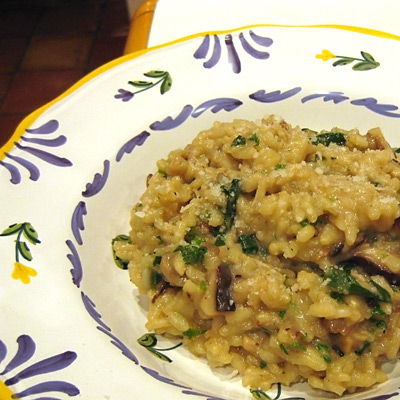
I love Autumn. I love the temperature, the colors, the clothes, and of course the fact that my favorite cooking style fits the weather more naturally. This recipe falls squarely into that bucket, and was a huge hit with Lisl and a friend who came over this evening. It combines a homemade Italian meatball with a French-style peasant stew.
Meatballs
1 lb ground pork shoulder
1.5 tsp fennel seed
1 tsp kosher salt (halve if you use table salt)
1/4 tsp hot red pepper flakes
12 black peppercorns
Rest of Stew
1 lb dried flageolet beans (alternative: great northern)
1 large spanish or vidalia onion, diced
4 carrots, diced
3 celery stalks, diced
large handful of white button mushrooms, diced
1/2 to 1 cup diced tomato
3 or 4 cloves of garlic, minced
handful of parley
2 fresh rosemary sprigs
1/2 cup dry vermouth or white wine
1 tbsp tomato paste
Cook the flageolet beans until al dente: place in a large pot with 1″ of water above the top of the beans. Add 3 bay leaves, bring to a boil, then remove the lid and simmer. Soaking beforehand will speed up cooking time. While the beans cook, do the next few steps.
Pound up the fennel seed, peppercorns and pepper flakes with a mortar/pestle, then add to the ground meat along with the salt. Mix together then mold into meatballs about 1.5″ in diameter. Heat up your stew pot (I use a dutch oven) on med-high heat with a little olive oil and brown the meatballs. Then set them aside and turn off the heat.
Spoon out most of the oil left in the stew pot, leaving enough to coat the bottom. Turn the heat back on to med-low. Cook the onions until translucent, then add the garlic, celery and carrots. Cook for a few minutes, then add the diced tomato and mushroom.
Separate the parsley stems and leaves, setting the leaves aside. Create a bouquet garnis by tying the parsley stems, rosemary sprigs, and 1 bay leaf together with kitchen twine. Add the bouquet garnis to the pot, and continue to let the vegetables gently cook.
Once the beans are al dente, drain or optionally reserve the cooking liquid. Add the beans and meatballs to the stew pot, add the wine, and add either water or the bean cooking liquid until the liquid level is about three-quarters up to the top of the food. Make sure the bouquet garnis is immersed, cover and either place the pot in a 350F oven or let simmer on the stove top.
After 40 minutes, taste for salt and gently stir in the tomato paste.
Remove about 1/2 of beans and vegetables to a food processor and puree. Return to the pot and continue to cook until the beans are soft and the flavors have melded. This step improves the texture, thickening the stew (I hate the common use of flour or starch to thicken).
Chop up the parsley leaves waiting in the wings all this time. Serve with the parsley and a little fresh pepper scattered on top.
